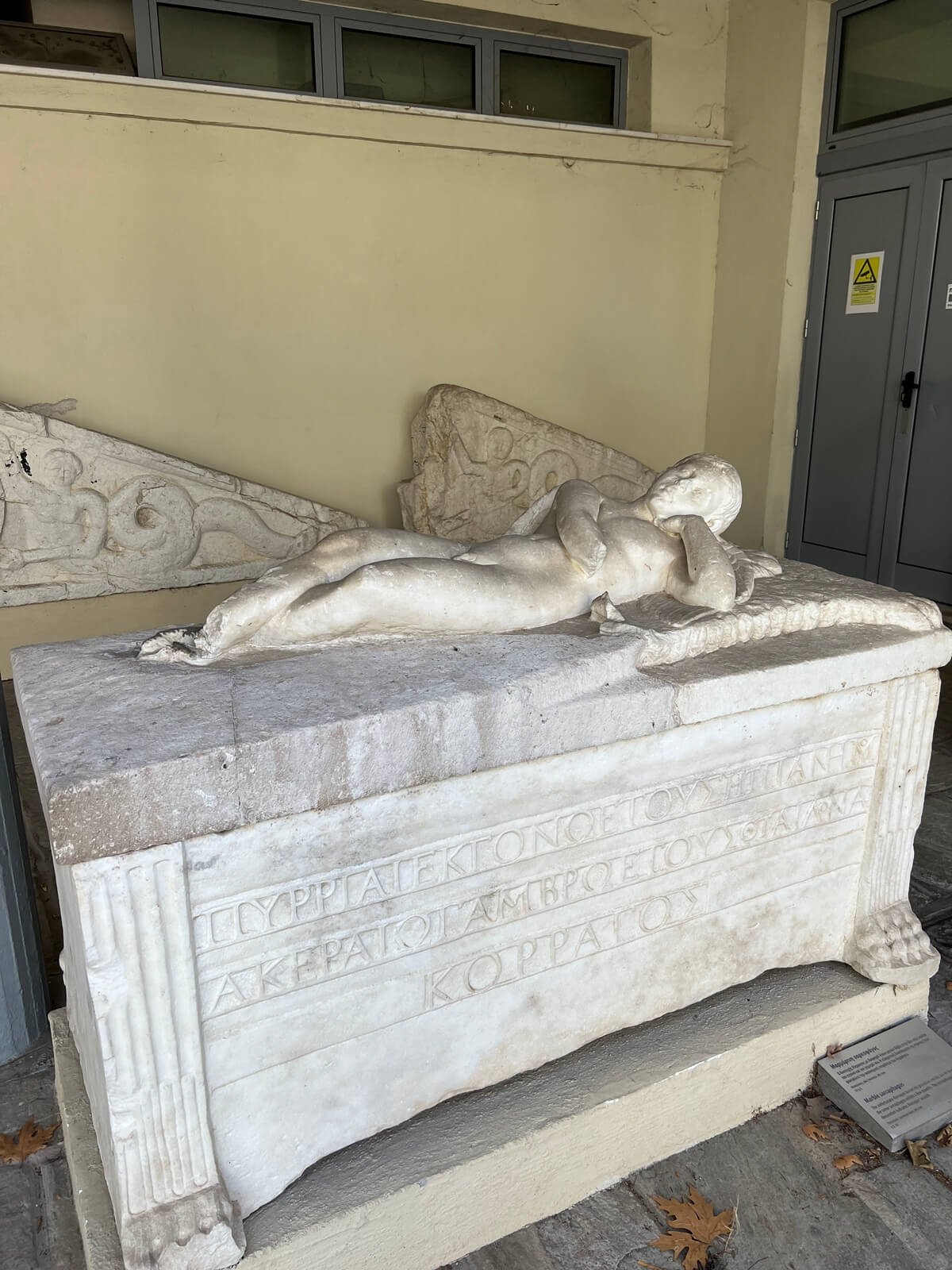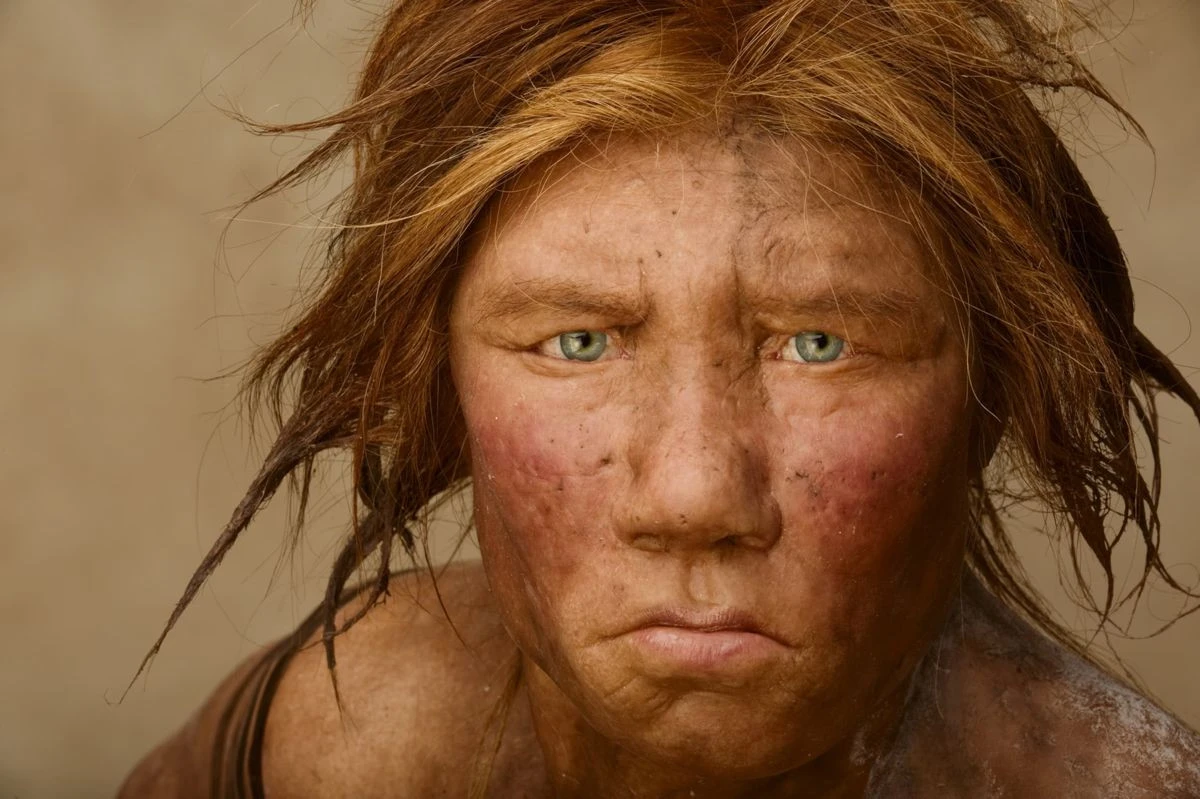During the 88th Thessaloniki International Fair, our team from The Archaeologist Page had the privilege of visiting the Archaeological Museum of Thessaloniki, a cornerstone of cultural preservation and an exceptional window into Macedonia's rich history. This visit, steeped in history and archaeology, allowed us to delve deep into the treasures of ancient Macedonia, an experience that any enthusiast of the ancient world should cherish.
A Modernist Monument of Culture
The Archaeological Museum of Thessaloniki, a state institution under the Ministry of Culture, has been a cultural beacon since 1962, housed in a building designed by renowned architect Patroklos Karantinos. The structure, celebrated as a listed monument of modern architectural heritage, stands as one of the finest examples of modernism in Greece. As you walk through its halls, the museum’s design seamlessly blends functionality with the aesthetics of a period that sought to redefine Greek architecture post-World War II. The building itself, as much as the treasures it holds, is a testament to a defining era in Greek architectural thought.
The museum underwent extensive renovations and reorganization in the years leading up to 2006, culminating in a reimagined layout that prioritizes the visitor experience. The redesign ensured that each exhibit could engage modern visitors while maintaining the integrity and significance of the artifacts. Today, the museum operates as a hub of cultural interaction, education, and archaeological research, welcoming visitors into the heart of ancient Macedonia.
Discovering Ancient Macedonia
The Museum’s permanent exhibitions are organized into eight distinct units, each offering a unique insight into the life, culture, and history of Macedonia from prehistoric times to late antiquity.
Prehistoric Macedonia presents an introduction to the ancient roots of the region, tracing life back to its earliest human settlements.
Towards the Birth of Cities explores the urbanization process in Macedonia, where small communities grew into vibrant cities over time.
Macedonia from the 7th century BC until Late Antiquity delves into the evolution of the Macedonian kingdom, the rise of its culture, and the integration of the region into the Roman Empire.
Thessaloniki, Metropolis of Macedonia, emphasizes the city's emergence as a powerful urban center in the Roman period, a metropolis that still serves as the cultural heartbeat of the region.
The Gold of Macedon is one of the most captivating sections, where visitors can marvel at gold artifacts uncovered in burial sites throughout Macedonia. These exquisite treasures, sourced from cemeteries in Sindos, Derveni, and Agia Paraskevi, highlight the wealth and artistry of ancient Macedonians. From gold diadems to intricately designed jewelry, this collection speaks volumes about the opulence and craftsmanship of the time.
Field, House, Garden, and Grave brings to life the everyday existence of ancient Macedonians, offering a glimpse into domestic life, agricultural practices, and burial customs. This section bridges the gap between the monumental achievements of ancient Macedonia and the daily lives of its people.
Memory in Stone showcases inscriptions, gravestones, and other monumental stone artifacts, commemorating individuals and moments from Macedonia's past.
Macedonia: From Fragments to Pixels reflects the museum’s commitment to using modern technology to bring history closer to the public, offering a digitalized experience of the ancient world, thereby blending the old with the new.
The Derveni crater, Tomb B, Late 4rtc. BC
Treasures from Thessaloniki and Beyond
The museum’s extensive collection is the result of years of excavations across Macedonia, beginning in 1912. It houses not only artifacts from these excavations but also items from private collections donated to the museum over the years. Some of the most notable exhibits include:
The Derveni Krater, a bronze masterpiece used for mixing wine, discovered in the Derveni tombs, which stands as a symbol of luxury and the high craftsmanship of the Hellenistic period.
The Bronze Helmet and Gold Mask from the cemetery of Sindos, a striking representation of warrior culture in ancient Macedonia.
The Head of Serapis, a statue dating back to the 2nd century BC, blending Greek and Egyptian religious influences.
The Derveni Papyrus is an invaluable ancient text and one of the oldest surviving papyrus manuscripts in Europe, offering a glimpse into ancient Greek philosophical and religious thought.
The Derveni Papyrus
The Derveni Papyrus (inv. no. A122) The exhibited fragments of the carbonized papyrus were placed in nine glass plates during the conservation work in 1962. Putting the 266 smaller and bigger fragments in the right order and studying the papyrus text was made possible with the use of special photographic techniques.
The Derveni Papyrus, the oldest European 'book', is the first Greek documentary heritage inscribed since October 2015 on the International Register of UNESCO's 'Memory of the World' Programme.
The Gold of Macedon exhibit, perhaps the museum’s crown jewel, presents a dazzling array of gold jewelry, burial items, and coins, each piece telling the story of Macedonia’s royal lineage, wealth, and artistic achievements. The ancient gold artifacts, including Medusa-head pendants, diadems, and other exquisite jewelry, reflect the importance of gold in Macedonian society, not only as a symbol of wealth but also as a vital part of its burial customs and religious practices.
A Cultural Nexus in the Heart of Macedonia
Beyond its permanent exhibits, the Archaeological Museum of Thessaloniki also plays a pivotal role in fostering cultural and academic exchange. The Manolis Andronikos Room houses an important exhibition on the coins of Macedonia, dating from the 6th century to 148 BC, offering visitors an insight into the economy and trade practices of the ancient kingdom.
The museum regularly organizes themed workshops, seminars, and educational programs, aiming to promote cultural learning and appreciation. These programs invite people of all ages to engage with the rich history of the region, bridging the gap between academia and the general public. The museum is not only a place where history is preserved but also a space where it continues to be interpreted, discussed, and reimagined for future generations.
A Connection to the Past, a Vision for the Future
Head thought to be a portrait of Alexander
It may be associated with the cult complex of statues of Alexander’s family, 175-200 AD.
As we walked through the halls of the Archaeological Museum of Thessaloniki, the past came alive through the carefully curated displays and thoughtfully reconstructed exhibits. Each artifact serves as a bridge between ancient and modern times, reminding us of the enduring legacy of Macedonia and its pivotal role in shaping Greek and European history.
For anyone visiting Thessaloniki, the museum offers an invaluable opportunity to connect with the region’s ancient roots, to explore the lives of its inhabitants, and to reflect on the historical forces that continue to shape modern Greece. It stands not just as a repository of ancient relics but as a living, breathing institution that continues to enrich our understanding of the ancient world.






































































